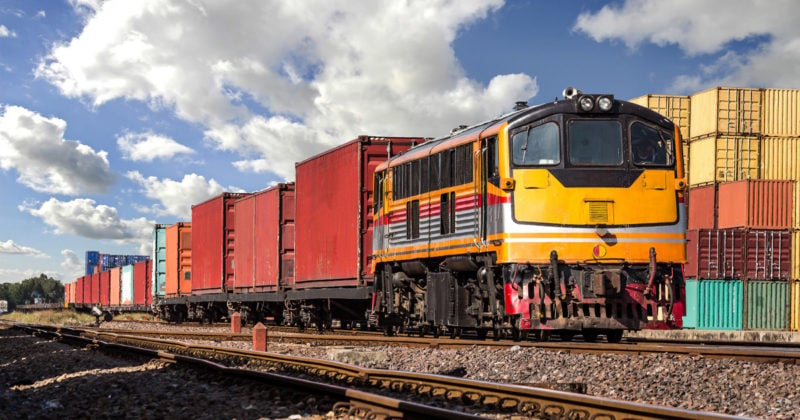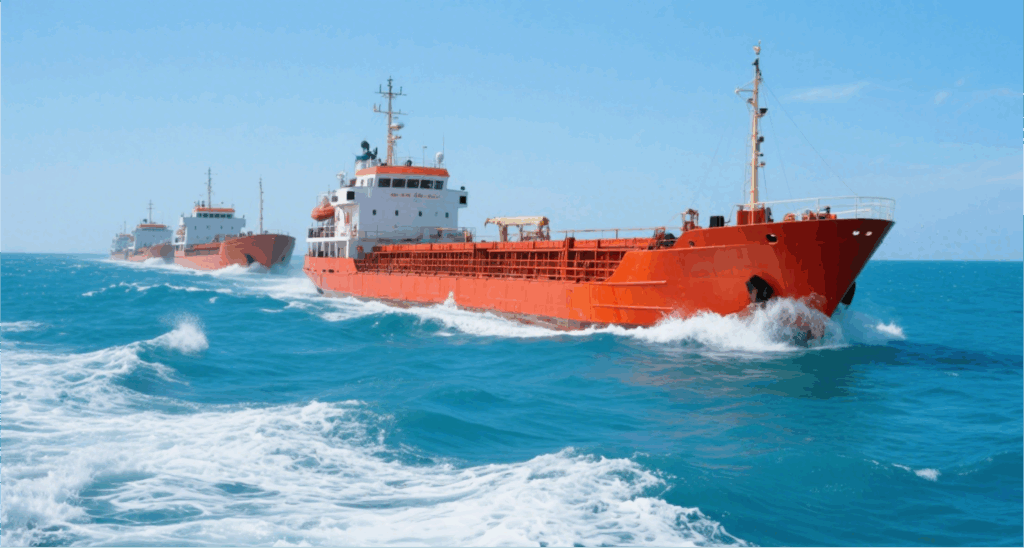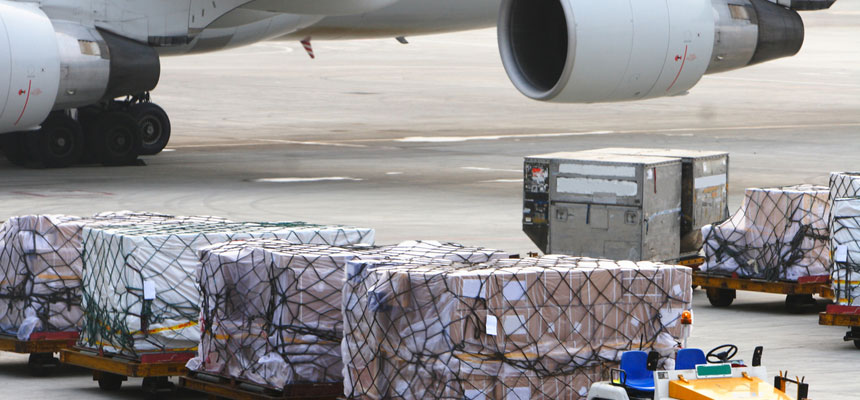- By Della tj
- October 17, 2025
- Rail Freight, Shipping
Table of Contents
In today’s global market, finding the balance between speed, cost, and reliability is crucial. Choosing professional rail freight from China to Italy ensures efficient delivery, predictable schedules, and reduced environmental impact. It bridges the gap between slow sea shipping and expensive air freight — the ideal solution for businesses that need both speed and savings.
Why Choose Rail Freight from China to Italy?
Rail freight has evolved into one of the most efficient and sustainable transport options between China and Europe. The China–Italy corridor connects industrial hubs like Chengdu, Xi’an, and Wuhan directly to Milan, Verona, and Bologna.
Main Benefits:
- Balanced speed & cost: 18–22 days delivery, 50% cheaper than air freight.
- Eco-friendly: 70% fewer emissions than air freight.
- Reliable schedules: Weekly departures with minimal delay.
- Door-to-door coverage: Rail + truck multimodal connections throughout Italy.
In addition, rail freight is less impacted by port congestion, allowing stable operations during seasonal peaks.
Cost, Transit Time & Route Overview
The professional rail freight from China to Italy operates along several Belt and Road routes. Each route varies in duration and pricing depending on city pair and service type (FCL or LCL).
| Route | Origin (China) | Destination (Italy) | Transit Time (Days) | Cost (USD/40ft) |
|---|---|---|---|---|
| Chengdu – Milan | Chengdu | Milan | 18–20 | 5,500–6,200 |
| Xi’an – Verona | Xi’an | Verona | 20–22 | 5,800–6,400 |
| Wuhan – Bologna | Wuhan | Bologna | 21–23 | 6,000–6,800 |
Rail freight is the perfect middle ground between cost-effective sea and fast air delivery.
Common Goods Shipped from China to Italy
A wide range of products move by rail between the two countries, supported by the flexibility of full container load (FCL) and less than container load (LCL) services.
Top Commodities:
- Electronics & machinery: stable in transit, moderate weight.
- Textiles & fashion: ideal for Milan’s garment industry.
- Automotive parts: delivered quickly to assembly plants.
- Furniture & construction materials: for retail and project supply.
- Food products: transported via reefer containers when temperature-controlled.
Rail freight provides secure handling with advanced tracking and reduced damage risk — crucial for high-value shipments.
Required Customs Documents
Professional rail freight requires strict compliance with customs procedures in both China and Italy. Having documents prepared in advance ensures smooth border clearance.
| Document | Purpose |
|---|---|
| Commercial Invoice | Declares product value for customs duties |
| Packing List | Details cargo items and measurements |
| Bill of Lading | Contract of carriage issued by rail operator |
| Certificate of Origin | Verifies product’s country of manufacture |
| Import Declaration | Submitted to Italian customs |
| Insurance Certificate | Protects goods during international transit |
Customs brokers often handle these formalities, minimizing risk and preventing costly delays.
Real Case Studies: China–Italy Rail Success Stories
Case 1: Electronics from Xi’an to Milan
Goods: 20 tons of computer components
Mode: FCL, rail freight
Transit Time: 19 days
Cost: USD 6,000
Result: 30% cheaper than air freight, delivered to Milan tech hub on schedule.
Case 2: Machinery Parts from Wuhan to Bologna
Goods: 28 tons of industrial machinery
Mode: Rail + Truck multimodal
Transit Time: 22 days
Cost: USD 7,100
Result: On-time arrival, seamless customs clearance, just-in-time factory supply.
Rail vs Sea vs Air Freight Comparison
| Factor | Rail Freight | Sea Freight | Air Freight |
|---|---|---|---|
| Speed | 18–22 days | 35–45 days | 5–7 days |
| Cost (USD/40ft) | 5,000–7,000 | 3,000–4,000 | 10,000–15,000 |
| CO₂ Emissions (g/ton-km) | 20–30 | 40–50 | 500–600 |
| Reliability | High | Medium | High |
| Cargo Type | General, industrial, high-value | Bulk | Urgent, fragile |
| Best For | Balanced logistics | Large shipments | Express delivery |
Conclusion: Rail freight remains the best option for companies seeking timely, eco-friendly, and moderately priced transport between China and Italy.
Choosing the Right Rail Freight Provider
Selecting the right logistics partner can make or break your shipment. A professional provider ensures transparency, coordination, and customs compliance.
Checklist for Choosing a Provider:
- Proven China–Europe logistics experience.
- Offers FCL/LCL and multimodal (rail + truck) delivery.
- Provides customs and insurance support.
- Includes tracking visibility from departure to arrival.
- Operates warehouses in both China and Italy.
Additionally, reputable providers maintain local partnerships in Italy, guaranteeing efficient last-mile distribution.
Environmental & Business Advantages
Rail freight stands out as one of the most eco-friendly transportation modes available. It helps companies meet sustainability targets while reducing operational costs.
| Transport Mode | CO₂ Emissions (g/ton-km) | Energy Use (MJ/ton-km) |
|---|---|---|
| Air Freight | 500–600 | 15–18 |
| Sea Freight | 40–50 | 4–5 |
| Rail Freight | 20–30 | 2–3 |
By shifting from air or sea to rail, businesses can cut emissions by up to 70% and reduce overall transit risk.
To summarize, rail freight offers the best balance between speed, cost, reliability, and sustainability — perfectly suited for modern logistics demands.
Conclusion
To conclude, professional rail freight from China to Italy is a proven, efficient, and sustainable logistics solution. It offers faster delivery than sea freight, far lower costs than air freight, and supports eco-conscious business goals.
By partnering with a reliable rail freight provider, you can streamline customs, reduce carbon emissions, and optimize your entire supply chain — ensuring every shipment arrives safely and on time.
Request a Quote
Need a tailored solution for your shipping from China?
Let TJ China Freight Forwarder assist you with reliable, cost-effective service.
FAQ:
Q1.How long does professional rail freight from China to Italy take?
Usually between 18 and 22 days, depending on origin city, customs processing, and rail terminal capacity.
Q2.What’s the average cost of rail freight per container?
A 40ft container costs around USD 5,000–7,000, depending on cargo type and season.
Q3.Can I ship small cargo through LCL rail service?
Yes, LCL (less than container load) rail shipping is ideal for smaller shipments and reduces cost per unit.
Q4.Are customs duties included in rail freight prices?
No, customs duties and VAT are billed separately based on product classification.
Q5.What documents are mandatory for customs clearance?
You’ll need a commercial invoice, packing list, bill of lading, and certificate of origin.




